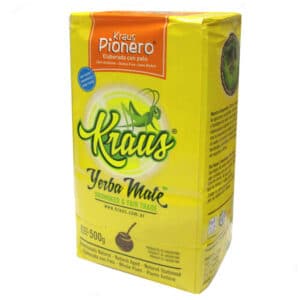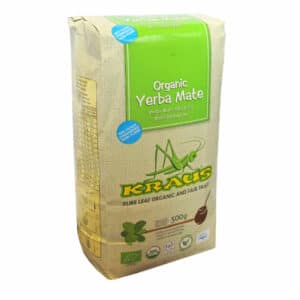Yerba Mate Article
Yerba Mate With Stems or Without Stems? Choosing The Right Yerba Mate (Part 1)
One of the fundamental choices you’ll be required to make when selecting a brand of Yerba Mate is yerba mate with stems or no stems. Con Palos (with stems) yerbas are generally more popular in Argentina and Paraguay, whereas coarser Sin Palos (without stems) blends tend to dominate the Uruguayan market. The divide isn’t clear cut however – no pun intended – and most Argentine brands now offer both Con Palos and Sin Palos varieties, the latter usually being referred to as despalada (stripped off) blends.

In Paraguay where cold brewed mate is most popular yerbas are generally cut coarser and have a high stem content. This combination leads to a slower release of flavour, suiting the milder flavour profile of terere, which is often blended with other herbs, juices and sugar.

In Brazil we see the exact opposite. Brazilian chimarrão does contain stems, and usually very large ones at that, but the yerba – or erva – is cut as fine as powder, meaning the visual contrast is particularly striking.

If we take a look at the Kraus range of organic yerba mates from Argentina, we see an interesting cross section of the type of cuts available, both yerba mate with stems and without stems. For those particularly keen on stems, both the original Organic and the Pionero have them in abundance, with the latter perhaps being one of smoothest varieties offered at UruShop, perfect for beginners.

At the opposite end of the spectrum Kraus offers both the Organic Pure Leaf and the Gaucho. The Pure Leaf contains no stems whatsoever, and despite being an unsmoked variety still packs a punch. I would describe the flavour as mildly vegetal with earthy undertones and a degree of pleasant bitterness.

Although sold as a Sin Palos (without stems), the Gaucho does actually contain a fair amount of micro-stems – some have been known to call them “splinter” palos – although these do little to detract from the Gaucho’s robust flavour.

How you like to prepare your mate may also have a bearing on what sort you choose to purchase. For example, if you enjoy drinking strong black coffee, or unsweetened English style tea with only a dash of milk, then a Sin Palos (without stems) blend might be more suited to your tastes. If green or herbal teas are more your thing, then the milder tones of a Con Palos (with stems) variety might be more palatable. Similarly if you are steeping your mate in a tea pot or cafetiere, then in my experience blends with stems tend to work better as they become less bitter over a longer period of time.When prepared traditionally in a gourd the choice between stems or no stems is purely a matter of personal preference. It is worth noticing however that blends with stems tend to be a little more forgiving to the beginner, as the yerba is generally cut a little bit coarser, meaning it is less likely to clog the bombilla (metal straw). The only instance where this rule doesn’t apply is Brazialian chimarrão which has the finest leaf cut of all.
Conclusion:
Yerba Mate folklore tends to dictate that blends without stems are stronger in flavour and generally have more bitterness. Yerba with stems on the other hand are generally recommend to those new to mate, or who prefer a milder flavour. From my experience this is generally a good rule of thumb, but it is important to remember that many other factors also affect the “strength” of any particular yerba, including how long the mate was aged for prior to packing; the coarseness of the cut of the leaf; the level of smoke applied, and the amount of polvo (dust) present in the blend. Don’t therefore write off particular brands or varieties based simply on stem content alone, as some yerbas might just surprise you!
Recap on Information on Yerba With or Without stems:
- Yerba mate without stems tend to be stronger and more bitter, and are preferred in Uruguay
- Yerba mate with stems are a little lighter as the stems serve to dilute the blend, and are preferred in Argentina and Paraguay
- Yerba mate with stems are normally used for brewing Terere
- A specialist Yerba Mate with high dust and very large stems is used for brewing Chimarrao, which is enjoyed in Brazil


